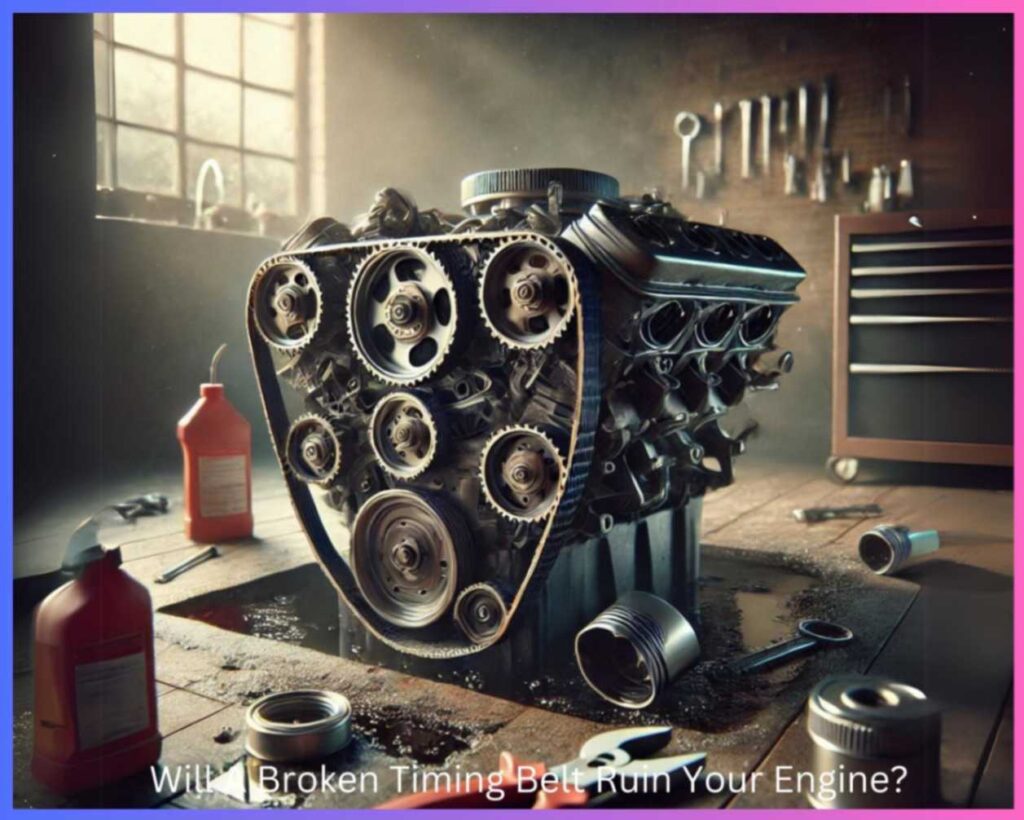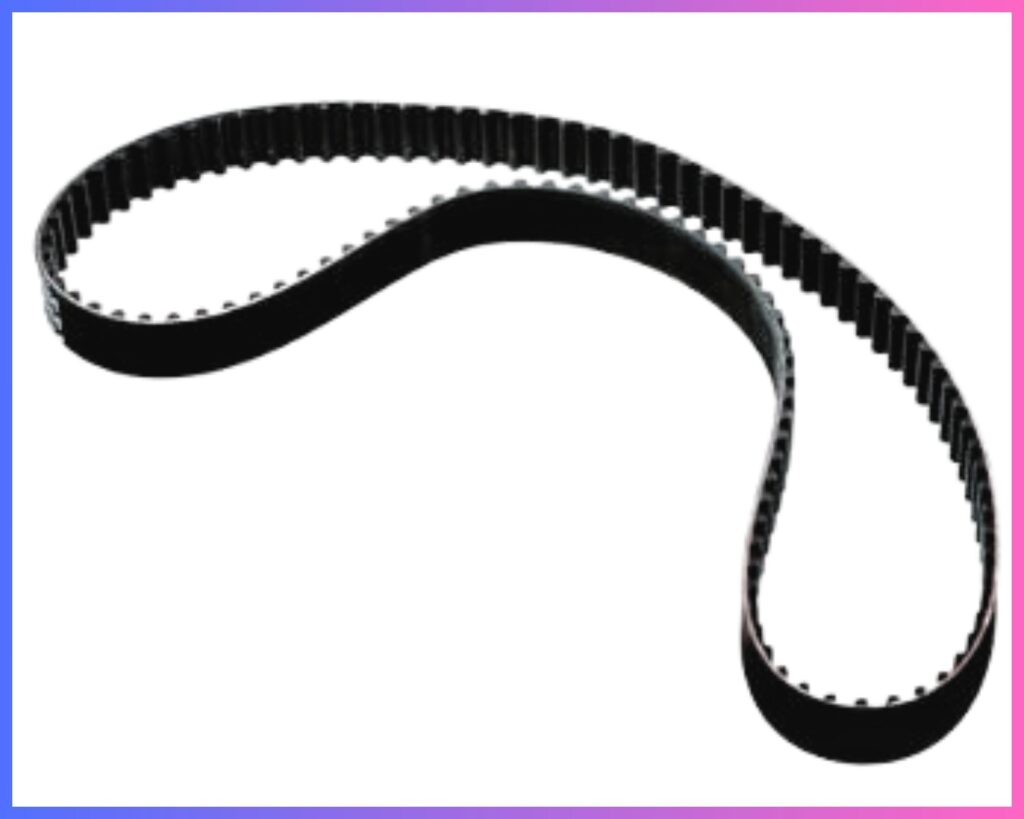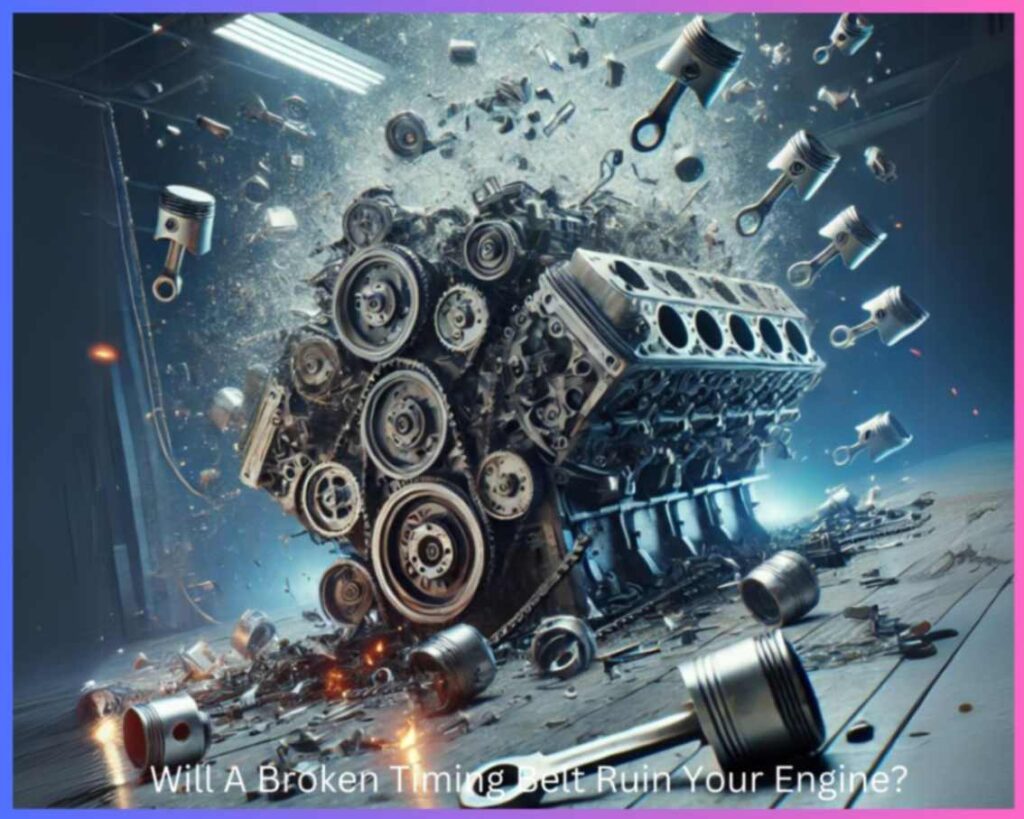Phone:
(701)814-6992
Physical address:
6296 Donnelly Plaza
Ratkeville, Bahamas.


Will A Broken Timing Belt Ruin Your Engine? The short answer is yes, and the consequences can be devastating. A broken timing belt can cause major damage to your engine, leaving car owners with expensive repairs or even a complete engine replacement. For car mechanics, drivers, and car lovers, this is one of the most critical issues to understand, as it can prevent costly engine failures.
Without a properly functioning timing belt, your engine’s components will fall out of sync. This can lead to severe damage, particularly to the valves, pistons, and cylinders. If left unchecked, this mechanical breakdown can result in catastrophic engine failure, leaving drivers stranded. Whether you’re a garage mechanic or a car owner, knowing the risks and warning signs is essential to keeping your vehicle in top shape.
But don’t worry! In this guide, we’ll break down everything you need to know about timing belts. We’ll discuss what happens when it breaks, how to spot warning signs, and what you can do to prevent engine destruction. By the end, you’ll have all the knowledge to make informed decisions and avoid costly engine repairs.

A timing belt is a rubber belt reinforced with durable materials like nylon or Kevlar. It ensures the engine’s camshaft and crankshaft are synchronized, allowing the valves and pistons to work in harmony. Without this critical part, the engine wouldn’t start or function properly, as it controls the timing of fuel intake and exhaust release in the engine’s combustion process
The timing belt’s main role is to keep the engine’s valves and pistons synchronized. It ensures that fuel enters the combustion chamber and exhaust gases exit at precise moments, improving engine performance and fuel efficiency.
Key Points:
The timing belt is essential for engine performance, and its durability depends on the materials used. Modern timing belts are typically made from strong rubber compounds, often reinforced with fiberglass or Kevlar for added strength. These materials resist stretching and wear, ensuring long-lasting performance. Additionally, temperature-resistant materials like neoprene or HNBR (Hydrogenated Nitrile Butadiene Rubber) are used to withstand the intense heat generated by the engine.
The timing belt’s precision is crucial for smooth engine performance. A properly aligned belt ensures synchronization between the valves and pistons, preventing misfires and engine damage. Misalignment, however, can lead to poor efficiency, causing the engine to stall or fail.
Furthermore, the timing belt controls the spark ignition, ensuring the fuel combusts at the right moment. A faulty belt can cause misfires, leading to a loss of power and fuel efficiency.
When a timing belt breaks, the engine stops instantly. This sudden stop can leave you stranded without any prior warning. In engines where valves and pistons share space, the consequences can be catastrophic.
Problem: A broken timing belt instantly stops the engine, causing serious damage.
Effect: This unexpected halt can leave you stuck in dangerous situations.
Solution:
A broken timing belt often leads to severe damage to valves, pistons, and cylinders. These parts may collide, resulting in expensive repairs or a complete engine rebuild.
Problem: A broken timing belt can damage crucial engine components.
Effect: This damage can lead to costly repairs or even total engine failure.
Solution: Regularly check the timing belt’s condition.

Knowing your engine type can save you from costly repairs. Interference engines are designed where the pistons and valves occupy the same space at different times. If the timing belt breaks, the two components can collide, leading to severe damage like bent valves or even a complete engine rebuild. Non-interference engines, on the other hand, have more space, so if the belt breaks, there’s no collision—saving you from catastrophic failure.
Key points:
A snapped timing belt in an interference engine could lead to complete engine destruction. The worst-case scenario involves valves and pistons colliding, resulting in bent components or even engine replacement. This costly repair could be avoided by maintaining your timing belt according to manufacturer recommendations.
Key points:
A ticking noise from the engine is a powerful warning sign of a failing timing belt. This ticking happens because the belt loses its proper tension, leading to misalignment. Addressing this early can prevent severe damage.
Excessive vibrations or engine misfiring are strong indicators of a worn-out timing belt. When the belt slips, it disrupts the engine’s timing, leading to these noticeable symptoms.
A worn or cracked timing belt is a clear signal that it’s time for a replacement. Regular checks for visible damage like cracks or fraying can help catch problems before they worsen.
The smartest way to prevent a broken timing belt is through regular inspection and maintenance. A timing belt should be replaced every 60,000 to 100,000 miles, though this varies by vehicle. Regular inspections help catch early signs of wear, like cracks or frayed edges. By being proactive, you avoid the costly damage that comes with a sudden failure.
It’s always cheaper to replace a worn timing belt before it fails. The costs of a broken belt can be astronomical—potentially damaging your engine and leading to repair bills of up to $5,000. Timely replacement saves both your engine and your wallet.
Replacing your timing belt can cost between $500 and $1,000, depending on your vehicle’s make, model, and location. This price includes labor and the belt itself, with parts costing around $100 to $350. Labor can add a significant portion due to the time-consuming nature of accessing the belt. To save costs, some opt to replace other parts, like the water pump, simultaneously.
A broken timing belt can cause severe engine damage, with repair costs ranging from $2,000 to $4,000. The extent of the damage often depends on whether the engine is interference or non-interference. Replacing a worn belt before it breaks can save you from these costly repairs.
Power Insight: Replacing a timing belt requires specific tools and advanced mechanical skills. You’ll need tools like a torque wrench, a crankshaft pulley holder, and a tensioner tool. Specialized equipment is crucial for aligning the camshaft and crankshaft to avoid engine misalignment. It’s recommended to have prior experience in engine repairs before attempting this task, as incorrect installation can cause severe damage.
Power Warning: Attempting to replace a timing belt without the right expertise is risky. Misalignment or improper tension can cause engine failure, leading to costly repairs. For most people, leaving this job to a professional mechanic is the safest option, especially with interference engines, where mistakes can result in catastrophic damage.
Before hiring a mechanic to replace your timing belt, ask if they have experience with your vehicle’s make and model. It’s also crucial to inquire about their tools—proper equipment is essential for correct installation. This ensures the job will be done right without causing engine issues.
Power Insight: A professional mechanic should offer a warranty, giving you peace of mind. Most reputable shops provide a warranty ranging from 12 months to 24,000 miles. Always confirm the details before proceeding with repairs to protect against faulty installation or premature part failure.
When the timing belt breaks while driving, your engine will stop immediately, and you may lose power. This could lead to serious engine damage, especially in interference engines where pistons can hit the valves.
Yes, a broken timing belt can cause severe damage, especially in interference engines. The pistons may collide with the valves, causing bent valves, damaged pistons, or even complete engine failure.
If your engine won’t start or cranks but won’t turn over, this could be a sign of damage. Bent valves and piston damage are common in interference engines.
Repairing an engine after a timing belt break can be costly. If there’s valve or piston damage, it could require a complete engine rebuild or replacement
No, driving with a broken timing belt is impossible. Your engine will not function, and continuing to try could lead to more severe damage.
If your timing belt breaks, safely pull over and stop the car. Do not try to restart the engine. Call a tow truck and have the vehicle taken to a mechanic.
In some cases, it may be worth fixing, especially if the car is in good condition otherwise. However, if the engine damage is severe, it might be more cost-effective to replace the engine or the car.
Follow your vehicle manufacturer’s recommendations for timing belt replacement intervals, usually every 60,000 to 100,000 miles. Regular maintenance can help prevent unexpected breaks
Interference engines are at higher risk for severe damage if the timing belt breaks. In these engines, the pistons and valves can collide, causing significant damage.
A broken timing belt cannot be repaired and must be replaced. Once it snaps, engine damage may already have occurred, and repairs could be extensive.